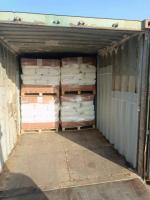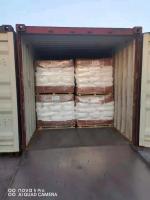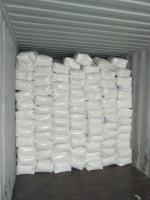Our Products
Polyacrylamide / Cationic polyarylamide of Praestol 644BS can be replaced by Chinafloc C

Cationic polyacrylamide (CPAM), such as Praestol 644BS, is a high-performance water-soluble polymer widely used in industrial and municipal water treatment, sludge dewatering, mineral processing, papermaking, and various solid–liquid separation applications. Praestol 644BS, produced by Solenis, is a cationic polyacrylamide emulsion with medium-to-high molecular weight and strong cationic charge density. Its main function is to flocculate negatively charged suspended solids, colloids, and organic matter in aqueous systems, enabling efficient separation of solids from liquids.
The cationic nature of Praestol 644BS allows it to interact strongly with negatively charged particles in water. When added to wastewater or slurry, the positively charged polymer chains adsorb onto the negatively charged surfaces of suspended solids, neutralizing their electrostatic repulsion. This charge neutralization, combined with polymer chain bridging, results in the formation of large, stable flocs that can settle or be filtered easily. Because of these mechanisms, Praestol 644BS is an essential flocculant in both industrial and municipal treatment processes.
1. Municipal and Industrial Wastewater Treatment
One of the primary applications of Praestol 644BS is in wastewater treatment—both municipal and industrial. In municipal wastewater treatment plants, cationic polyacrylamide is commonly used in the sludge thickening and dewatering stages. Biological sludge generated during secondary treatment contains fine, negatively charged particles that resist dewatering. Praestol 644BS neutralizes these charges and bridges the fine solids, forming dense, compact flocs. These flocs release water more easily, improving the performance of dewatering equipment such as belt presses, centrifuges, and filter presses.
As a result, the polymer helps achieve higher solids content in the dewatered sludge cake and reduces the volume of sludge for disposal, thereby lowering handling and transportation costs. Additionally, using Praestol 644BS leads to faster dewatering rates and improved filtrate clarity. Its high molecular weight and balanced cationic charge density ensure that it performs effectively under varying sludge characteristics and pH conditions.
In industrial wastewater treatment, Praestol 644BS is used in effluents from industries such as textiles, food and beverage, petrochemicals, pulp and paper, and metal finishing. These effluents often contain negatively charged organic molecules, colorants, and suspended solids that cannot be effectively removed by sedimentation alone. By introducing Praestol 644BS, the anionic contaminants are flocculated into large aggregates, significantly reducing turbidity, color, and chemical oxygen demand (COD).
For example, in textile wastewater, the polymer binds with anionic dye molecules, breaking their dispersion stability and forming colored flocs that settle quickly. In food processing wastewater, it improves solid-liquid separation by aggregating organic matter, proteins, and fats. In chemical and petrochemical effluents, it assists in separating oil-water emulsions and organic impurities, producing clearer effluent suitable for reuse or discharge.
2. Sludge Dewatering and Thickening
Praestol 644BS is especially valued for its superior performance in sludge conditioning and dewatering. The sludge generated during wastewater treatment processes often has high water content and poor settleability. The addition of Praestol 644BS before mechanical dewatering greatly enhances the sludge’s ability to release water. This results in more compact sludge, reduced moisture content, and higher throughput in dewatering units.
When applied in sludge thickening tanks or clarifiers, the polymer increases the rate of solid-liquid separation and improves the clarity of overflow water. The efficiency of Praestol 644BS also translates into energy savings, as less time and power are needed for centrifuge or press operation. It is compatible with other conditioning chemicals such as polyDADMAC or polyamine, which can be used as primary coagulants before the flocculation stage for optimized results.
3. Papermaking and Pulp Processing
In the paper and pulp industry, Praestol 644BS functions as a retention and drainage aid, pitch control agent, and charge stabilizer. Paper furnish contains fibers, fillers, pigments, and various additives, most of which carry a negative surface charge. Excessive anionic charge can lead to poor retention, foaming, and unstable paper machine operation. The cationic nature of Praestol 644BS neutralizes these charges, improving the retention of fine fibers and fillers on the paper sheet.
This leads to better paper formation, higher sheet strength, and reduced loss of valuable materials in the white water. Moreover, Praestol 644BS enhances drainage on the wire section, increasing machine speed and production efficiency. In addition, it helps control pitch and resin deposits by neutralizing sticky, negatively charged colloidal substances. When used in combination with inorganic microparticles such as bentonite or colloidal silica, the polymer enhances floc formation and provides superior retention and drainage performance.
4. Mining and Mineral Processing
Praestol 644BS also has extensive use in mineral processing and mining operations. Many mineral suspensions, such as those from coal washing, bauxite refining, and metal ore beneficiation, contain ultrafine negatively charged particles that remain suspended for long periods. By adding Praestol 644BS, these particles are flocculated and rapidly settle, resulting in clearer supernatant water and improved thickener performance.
In tailings management, the polymer enhances the sedimentation rate, increases the density of underflow solids, and improves the recovery of process water. This contributes to more sustainable operations by reducing the need for fresh water and minimizing environmental discharge. The polymer is compatible with other flocculants and coagulants and performs well even in systems with high salinity or varying pH levels.
5. Oilfield and Petrochemical Applications
In oilfield water treatment, Praestol 644BS is applied in produced water clarification, oil-water separation, and sludge dewatering. It helps break oil-water emulsions by flocculating fine oil droplets and suspended solids, promoting coalescence and phase separation. In refineries and petrochemical plants, it aids in clarifying process water and reducing the load on downstream treatment units.
The polymer’s resistance to shear degradation and chemical stability make it particularly suitable for harsh conditions commonly encountered in oilfield operations. Its ability to work efficiently at low dosages and over a wide pH range ensures consistent treatment performance.
6. General Advantages of Praestol 644BS
Praestol 644BS offers several operational and environmental benefits. It is effective across a broad pH range (typically pH 4–10) and performs well in both cold and warm water conditions. It produces less sludge than inorganic coagulants, dissolves readily, and can be easily metered in emulsion form. Its strong cationic charge allows for lower dosage rates, leading to cost savings and less environmental impact.
In addition, the polymer is compatible with other treatment agents, such as aluminum salts, ferric salts, and organic coagulants, providing flexibility in treatment design. Its non-corrosive nature and low toxicity make it safe to handle and suitable for environmentally responsible applications.





